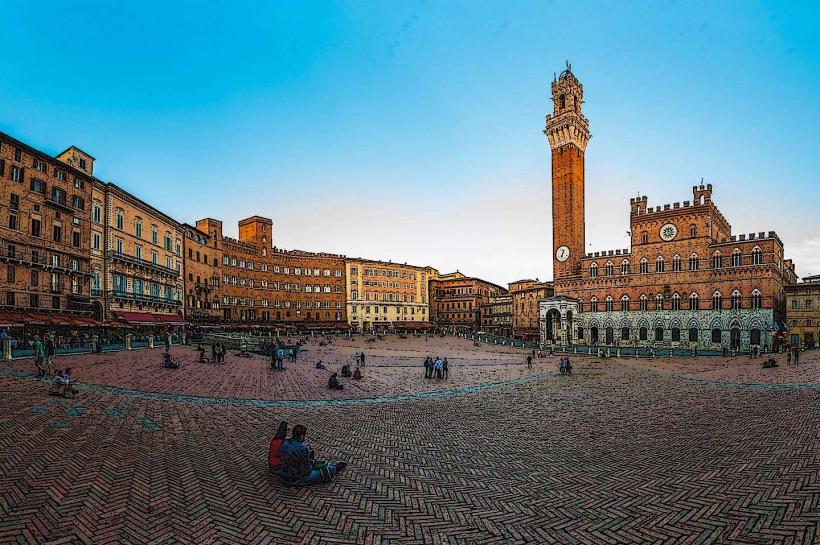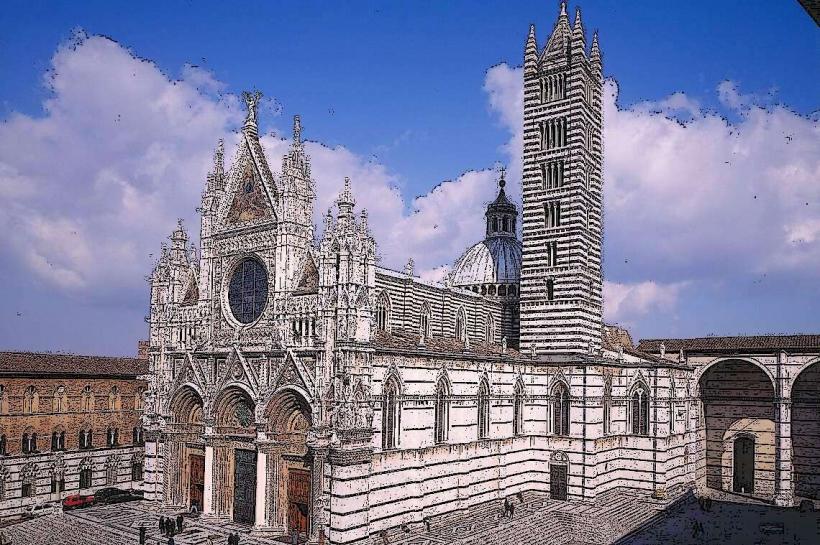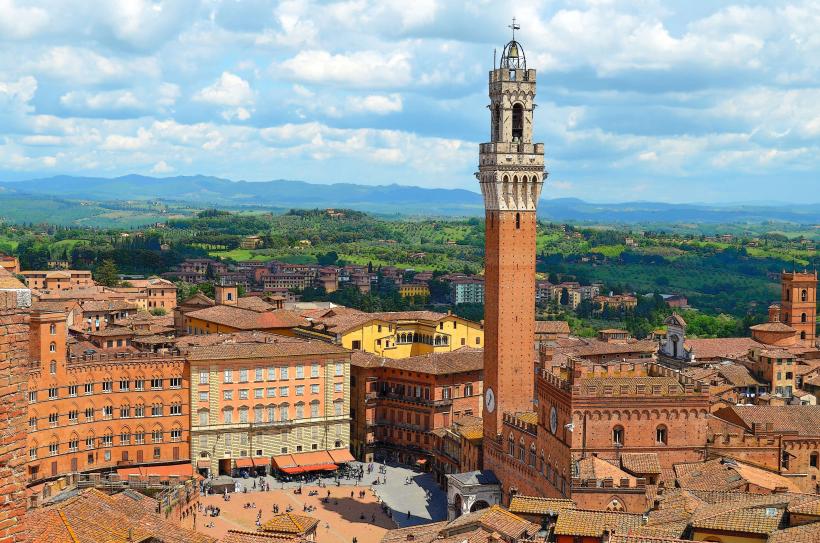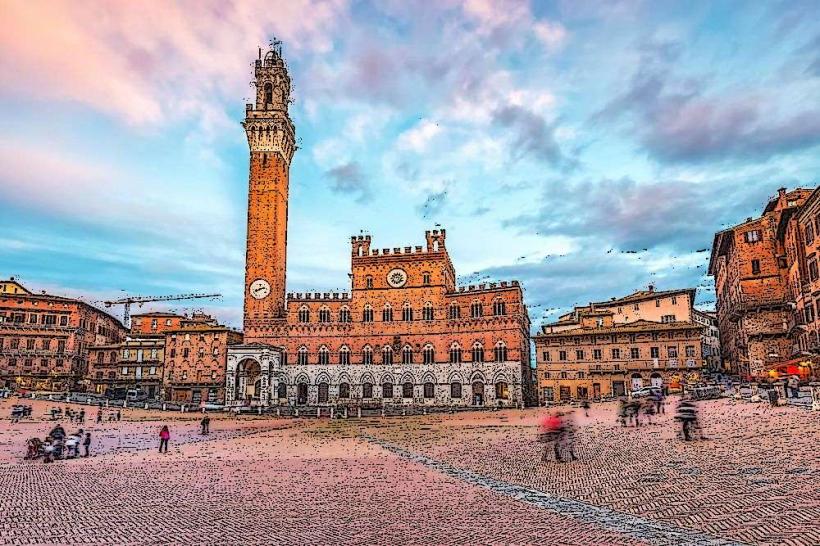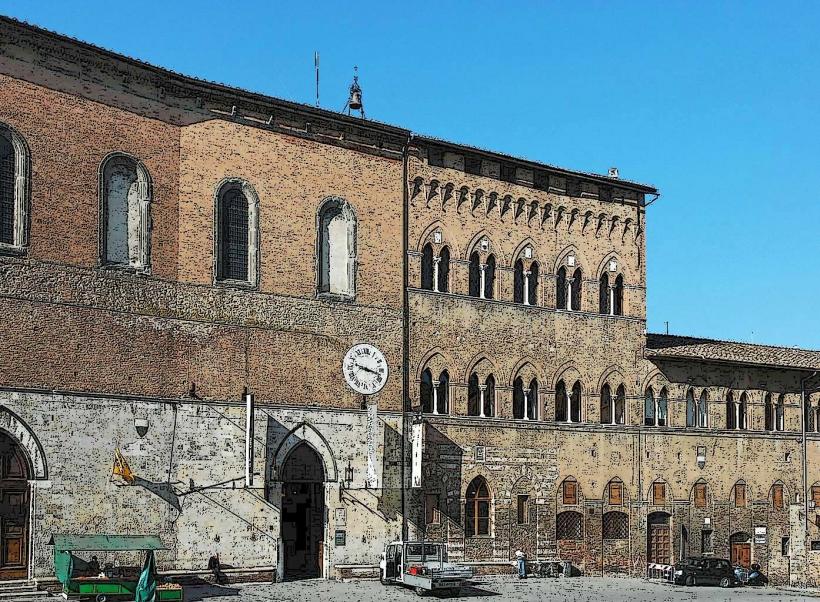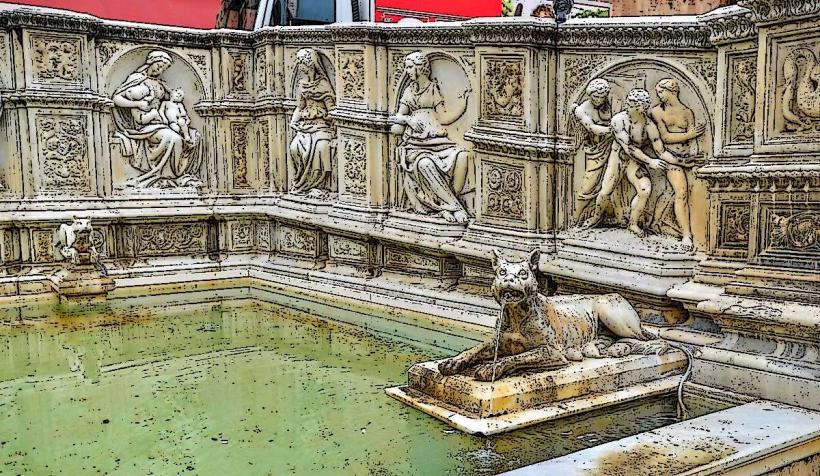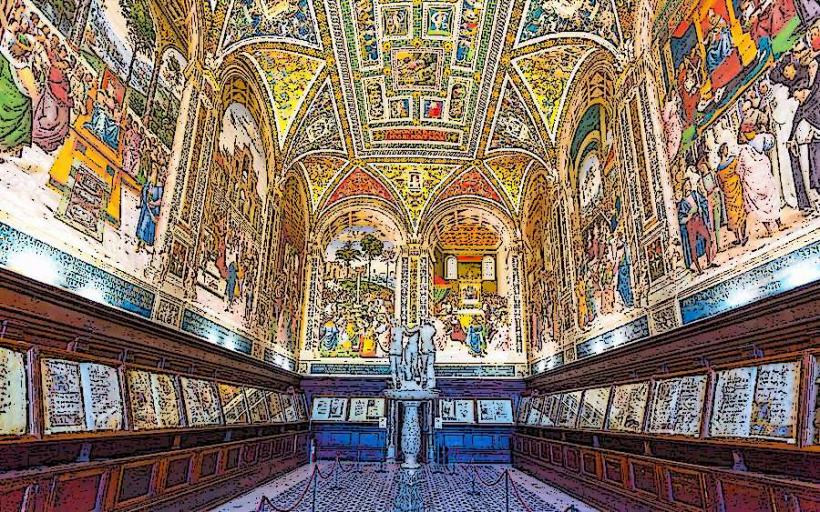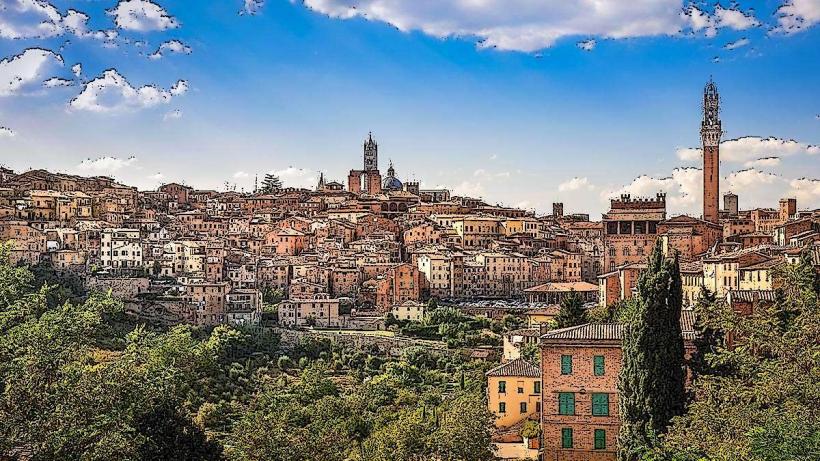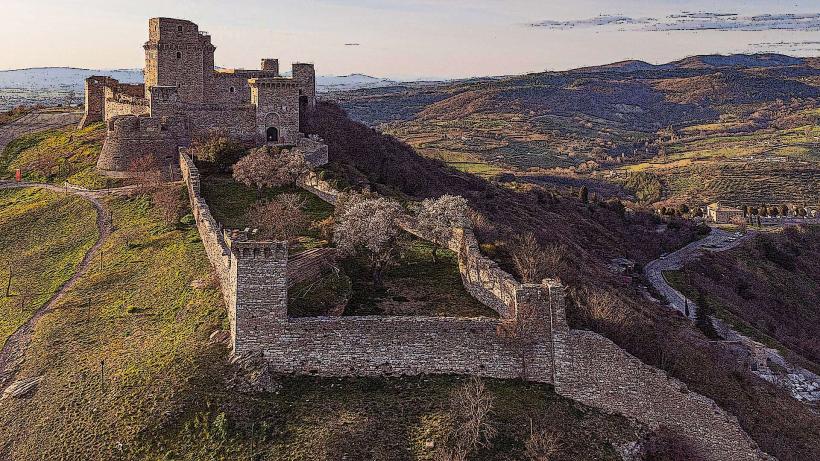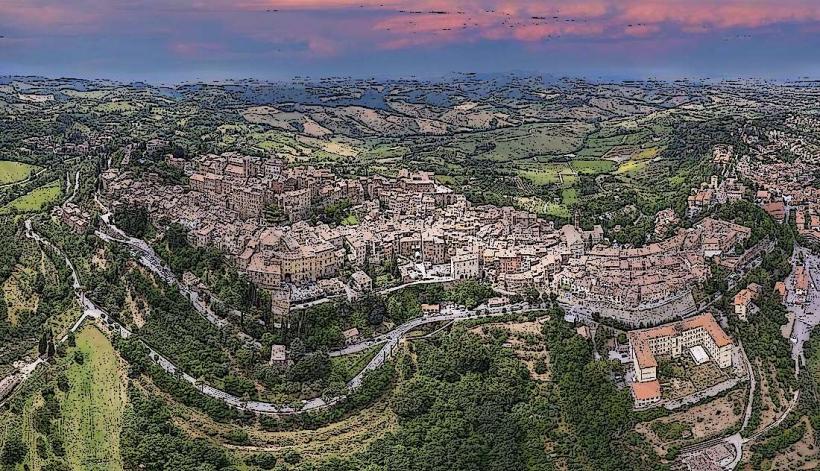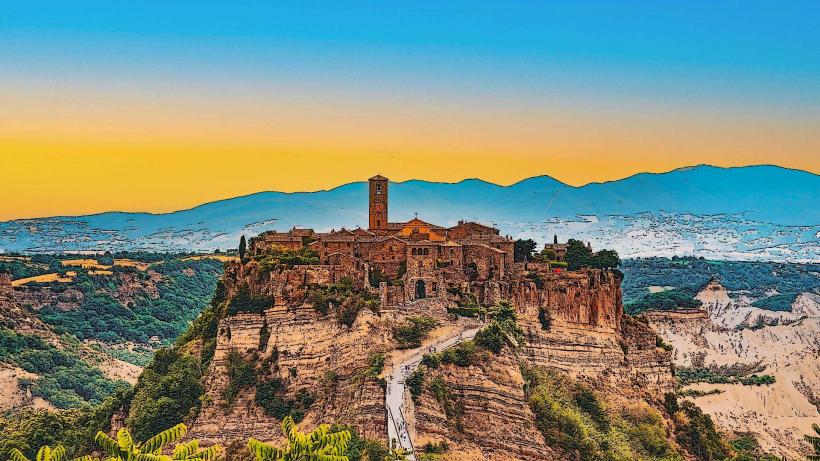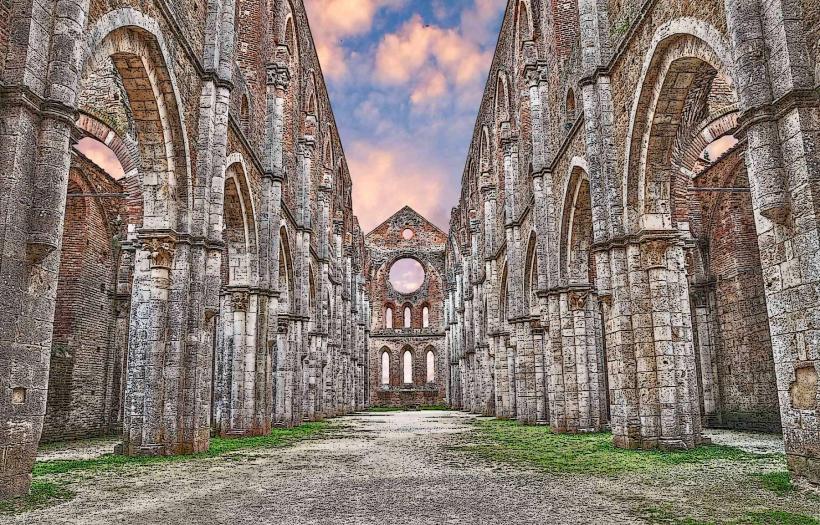Information
Landmark: Church of San FrancescoCity: Siena
Country: Italy
Continent: Europe
The Church of San Francesco (Chiesa di San Francesco) in Siena is an important religious and historical site, located on the outskirts of the city center. It is notable not only for its spiritual significance but also for its historical association with Saint Francis of Assisi and the Franciscan Order. The church, along with its surrounding convent, offers a peaceful retreat and a glimpse into Siena’s religious heritage.
1. Historical Background
The Church of San Francesco was founded in the 13th century, around 1235, by the Franciscan friars. It was built to accommodate the growing presence of the Franciscan Order in Siena, which was founded by Saint Francis of Assisi. The Franciscans were deeply involved in preaching and charity work, and their presence in Siena was part of the broader spread of the Franciscan movement throughout Italy during the Middle Ages.
The church was completed in the late 13th century and became an important center of Franciscan spirituality in the city. It is historically significant as one of the earliest examples of Franciscan architecture in Siena.
Over the centuries, the church underwent several renovations and restorations, particularly in the Renaissance and Baroque periods. The church’s structure and its interior reflect a combination of Gothic and Renaissance styles, with various artistic influences over time.
2. Architectural Features
The church's exterior is relatively simple, with a plain facade typical of Franciscan churches of the period. The stone construction and Gothic elements give the church an austere, yet dignified, appearance. The building’s minimalist style is consistent with the Franciscan ideal of humility and simplicity.
The church’s interior is more elaborate, featuring a spacious nave and side chapels, with some Gothic arches and vaults. The wooden ceiling of the church is a notable feature, displaying a star-shaped pattern that contributes to the church's unique atmosphere.
The church houses a number of artworks and frescoes, many of which were created during the Renaissance. Notably, the church contains frescoes attributed to the Sienese school of painting, including works by Bartolomeo di David and Sodoma, which depict scenes from the life of Saint Francis.
3. Notable Artistic Elements
The frescoes in the church are particularly important. One of the key works is a series of frescoes by Sodoma, a renowned Sienese artist, which depict scenes from the life of Saint Francis. These frescoes are considered significant contributions to the Sienese Renaissance art and showcase the influence of Gothic and early Renaissance styles.
The frescoes of the Crucifixion, painted by Bartolomeo di David, can be found in one of the church's chapels. These works are characterized by their emotional intensity and reflect the religious devotion central to the Franciscan ethos.
The main altar of the church features a beautiful altar piece that portrays scenes from Saint Francis' life and is one of the artistic highlights of the interior. The pulpit is another notable element, finely crafted in wood.
4. Role in Siena's Religious Life
The Church of San Francesco has played a central role in the religious life of Siena. In addition to being a place of worship, it served as a gathering place for pilgrims and the Franciscan community. Over time, it became an important site for Sienese Catholics to come and pray, especially those with a particular devotion to Saint Francis.
The church was also historically associated with Franciscan charity work. The Franciscans were known for their commitment to helping the poor and sick, and the church became a center for these efforts in Siena, with friars engaging in various acts of service to the community.
Saint Francis of Assisi, the founder of the Franciscan Order, is particularly venerated in Siena. It is believed that Saint Francis visited the city several times during his life, and his association with Siena is still honored in the church. Pilgrims come to the church to seek inspiration from Saint Francis' life and teachings.
5. The Convent and Surroundings
The Church of San Francesco is not just a church but also part of a larger Franciscan complex, which includes a convent and monastic buildings. The Franciscan friars lived and worked in these buildings, and they were integral to the religious and charitable life of the community.
The surrounding area includes gardens and open spaces that were once used by the friars for prayer and contemplation. These gardens offer a peaceful retreat and are still accessible to visitors today, providing a serene atmosphere in the heart of the city.
6. The Church Today
Today, the Church of San Francesco is a place of worship and a popular tourist attraction, especially for those interested in the history of the Franciscan Order and the artistic heritage of Siena. It remains an active church with regular Mass services, as well as being used for religious events and pilgrimages.
The church is also home to an archaeological museum that displays various relics and items associated with the Franciscan tradition in Siena, adding to its educational and historical value.
The church is part of the historic center of Siena, which is a UNESCO World Heritage Site, and is included in many tours of the city due to its religious significance and its impressive collection of Renaissance art.
7. Visiting the Church
Visitors to the Church of San Francesco can explore its gothic and Renaissance architecture, view the frescoes and altarpieces, and learn about the role the Franciscan Order played in the history of Siena. The peaceful atmosphere and historic significance make it a worthwhile stop for those interested in both the religious history and artistic heritage of Siena.
The church’s central location makes it easily accessible to visitors exploring Siena's other landmarks, such as the Piazza del Campo, the Duomo, and the Medici Fortress.
Conclusion
The Church of San Francesco is an essential historical and spiritual site in Siena. From its origins in the 13th century as a Franciscan foundation to its role as a repository of Renaissance art, the church offers a fascinating glimpse into the religious and artistic life of the city. The church remains an important place of worship, pilgrimage, and cultural significance, making it a must-visit destination for anyone exploring Siena’s rich religious heritage.

